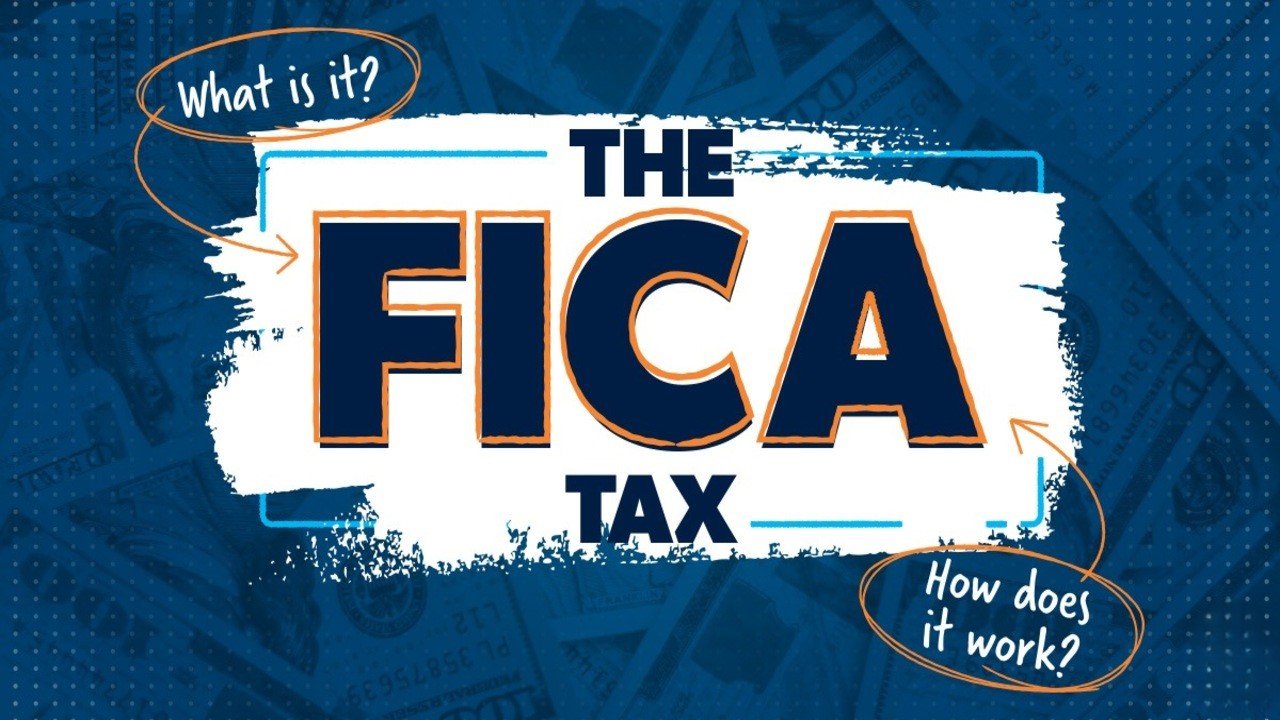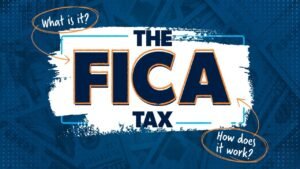What Is FICA Tax? | Understanding Your Payroll Deductions.
When you receive your paycheck, you might notice several deductions that reduce your take-home pay. Among these, the FICA tax is one of the most significant and consistent. If you’ve ever wondered what “FICA” stands for, why it’s deducted, or how it impacts your finances, this article will break it down in clear, human terms. By understanding the FICA tax its purpose, calculation, and role in your financial life—you’ll be better equipped to manage your budget and plan for the future. This comprehensive guide, written as of September 14, 2025, explores the ins and outs of FICA, its components, who pays it, and why it matters to every working American.
Thank you for reading this post, don't forget to subscribe!What Is FICA Tax?
FICA stands for Federal Insurance Contributions Act, a U.S. federal law that mandates payroll taxes to fund two critical social safety net programs: Social Security and Medicare. what is fica tax Enacted in 1935 as part of the Social Security Act, FICA ensures that workers contribute to a system that provides retirement benefits, disability insurance, survivor benefits, and healthcare for seniors. When you see “FICA” on your pay stub, it represents the combined taxes withheld for these programs.
The FICA tax is a payroll deduction taken from your wages before you receive your paycheck. It’s not optional—both employees and employers are required to contribute, and the amounts are set by federal law. For 2025, the FICA tax comprises two parts:
- Social Security Tax: This funds retirement benefits, disability insurance, and survivor benefits for workers and their families. It’s calculated at 6.2% of your wages, up to a wage base limit of $176,100 for 2025.
- Medicare Tax: This supports healthcare for individuals aged 65 and older, as well as certain disabled individuals. It’s calculated at 1.45% of all wages, with no income cap. High earners may also face an Additional Medicare Tax of 0.9% on wages exceeding $200,000 (single) or $250,000 (married filing jointly).
Together, these taxes total 7.65% of your wages (6.2% + 1.45%) for most employees, assuming your income is below the Social Security wage cap. Employers match this contribution, effectively doubling the amount paid into the system.
Why Does FICA Matter?

what is fica tax are the backbone of America’s social safety net. Social Security provides a financial cushion for retirees, ensuring they have income after leaving the workforce. In 2025, over 67 million Americans receive Social Security benefits, with the average monthly benefit around $1,920 for retired workers. Medicare, on the other hand, covers hospital stays, doctor visits, and prescription drugs for seniors, reducing out-of-pocket healthcare costs.
what is fica tax contributions are an investment in your future. By paying into Social Security, you earn “credits” toward retirement or disability benefits. For example, in 2025, you earn one credit for every $1,730 in covered earnings, up to four credits per year. After 40 credits (typically 10 years of work), you qualify for retirement benefits. Medicare eligibility kicks in at age 65, provided you’ve paid into the system for at least 10 years.
However, FICA deductions can feel like a significant chunk of your paycheck, especially for low- or middle-income earners. Understanding how these taxes work can help you appreciate their long-term value while budgeting for their immediate impact.
Who Pays FICA Taxes?
FICA applies to most workers in the United States, including:
- Employees: If you work for a company, your employer withholds 7.65% of your wages for FICA and matches that amount. You’ll see this as “FICA,” “OASDI” (Old-Age, Survivors, and Disability Insurance), or “Medicare” on your pay stub.
- Self-Employed Individuals: Freelancers, contractors, and business owners pay the full 15.3% (6.2% + 1.45% x 2) as the Self-Employment Tax, covering both the employee and employer portions. However, they can deduct half of this tax as a business expense.
- Certain Exempt Groups: Some workers, like certain nonresident aliens, students employed by their schools, or federal employees hired before 1984 under the Civil Service Retirement System, may be exempt from parts of FICA.
The Social Security wage cap ($176,100 in 2025) means that once your annual earnings exceed this amount, you stop paying the 6.2% Social Security tax for the rest of the year. what is fica tax ,Medicare tax, however, has no cap, so it applies to all your earnings.
How Is FICA Tax Calculated?
Let’s break down how FICA taxes are computed with a few examples for 2025:
Example 1: Salaried Employee Earning $50,000 Annually
- Social Security Tax: 6.2% of $50,000 = $3,100
- Medicare Tax: 1.45% of $50,000 = $725
- Total FICA Tax: $3,100 + $725 = $3,825
- Employer Contribution: Matches the $3,825
- Total Paid to System: $7,650
Your take-home pay is reduced by $3,825 annually, or about $319 per month if paid monthly.
Example 2: High Earner Making $250,000
- Social Security Tax: 6.2% of $176,100 (wage cap) = $10,918.20
- Medicare Tax: 1.45% of $250,000 = $3,625
- Additional Medicare Tax: 0.9% of ($250,000 – $200,000) = $450
- Total FICA Tax: $10,918.20 + $3,625 + $450 = $14,993.20
- Employer Contribution: Matches $10,918.20 + $3,625 = $14,543.20 (no match for Additional Medicare Tax)
Here, your paycheck deductions total nearly $15,000, with the employer covering a similar amount.
Example 3: Self-Employed Freelancer Earning $80,000
- Self-Employment Tax: 15.3% of $80,000 = $12,240
- Deductible Portion: Half of $12,240 = $6,120 (deducted from taxable income)
- Net Tax Impact: $12,240, but the deduction lowers overall tax liability.
These examples show how FICA scales with income and varies by employment type. Check your pay stub or consult a tax professional to confirm your deductions.
Common Misconceptions About FICA Taxes
- “FICA Taxes Are Optional”: Not true. what is fica tax is mandatory for most workers, and employers must withhold it. Opting out is only possible for specific exempt groups.
- “I Won’t Benefit from Social Security”: While concerns about the program’s long-term solvency exist, current projections show Social Security will remain solvent through at least 2035 with adjustments. Your contributions today fund current retirees and secure your future benefits.
- “FICA Covers All Taxes”: FICA only funds Social Security and Medicare. Federal income tax, state taxes, and other deductions are separate.
How FICA Impacts Your Budget
FICA’s 7.65% bite (or 15.3% for self-employed) can strain your budget, especially if you’re living paycheck to paycheck. For example, a $40,000 annual salary loses $3,060 to FICA, reducing take-home pay significantly. To manage this:
- Budget for Deductions: Factor FICA into your monthly expenses, alongside federal and state taxes.
- Maximize Tax Credits: Credits like the Earned Income Tax Credit (EITC) or Child Tax Credit can offset FICA’s impact for eligible low-income earners.
- Plan for Self-Employment: If freelancing, set aside 15-20% of income for taxes, including FICA, to avoid surprises.
For high earners, the Additional Medicare Tax can add up, so consider adjusting withholdings or making estimated tax payments to avoid underpayment penalties.
The Bigger Picture: FICA’s Role in Society
FICA taxes are a cornerstone of America’s social contract. Social Security lifts millions of seniors out of poverty, with 90% of people over 65 receiving benefits in 2025. Medicare ensures access to healthcare, with over 60 million enrollees. Without FICA, these programs would collapse, leaving vulnerable populations without support.
However, FICA isn’t without criticism. Some argue the Social Security wage cap favors high earners, as they pay a lower effective rate on total income. what is fica tax Others worry about the system’s sustainability as the population ages. In 2025, discussions in Congress focus on reforms like raising the wage cap or adjusting benefits to ensure long-term funding.
How to Check Your FICA Contributions
To see how much you’ve paid into Social Security and Medicare, create an account at ssa.gov. Your Social Security Statement shows your lifetime contributions, estimated retirement benefits, and credits earned. For Medicare, your W-2 form (Box 6) lists annual Medicare tax withheld. Self-employed individuals can review Schedule SE on their tax return.
Tips for Navigating FICA in 2025
- Review Pay Stubs: Ensure FICA deductions are correct. Errors can lead to over- or underpayment, affecting benefits or tax bills.
- Plan for Retirement: Use Social Security’s online calculators to estimate future benefits based on your contributions.
- Consult a Professional: If self-employed or a high earner, a tax advisor can optimize your FICA and overall tax strategy.
- Stay Informed: Tax laws evolve. For 2025, no major FICA rate changes are planned, but monitor updates from the IRS or Social Security Administration.
Conclusion
The FICA tax, while a noticeable deduction, is a critical investment in your future and the nation’s social safety net. By funding Social Security and Medicare, it ensures financial security and healthcare for millions, including you when you retire. what is fica tax Understanding how it’s calculated, who pays it, and its long-term benefits empowers you to manage your finances wisely. Whether you’re an employee seeing 7.65% withheld or a freelancer tackling the full 15.3%, FICA is a shared responsibility that shapes America’s economic landscape. Check your pay stub, plan ahead, and rest assured your contributions are building a safety net for tomorrow.













